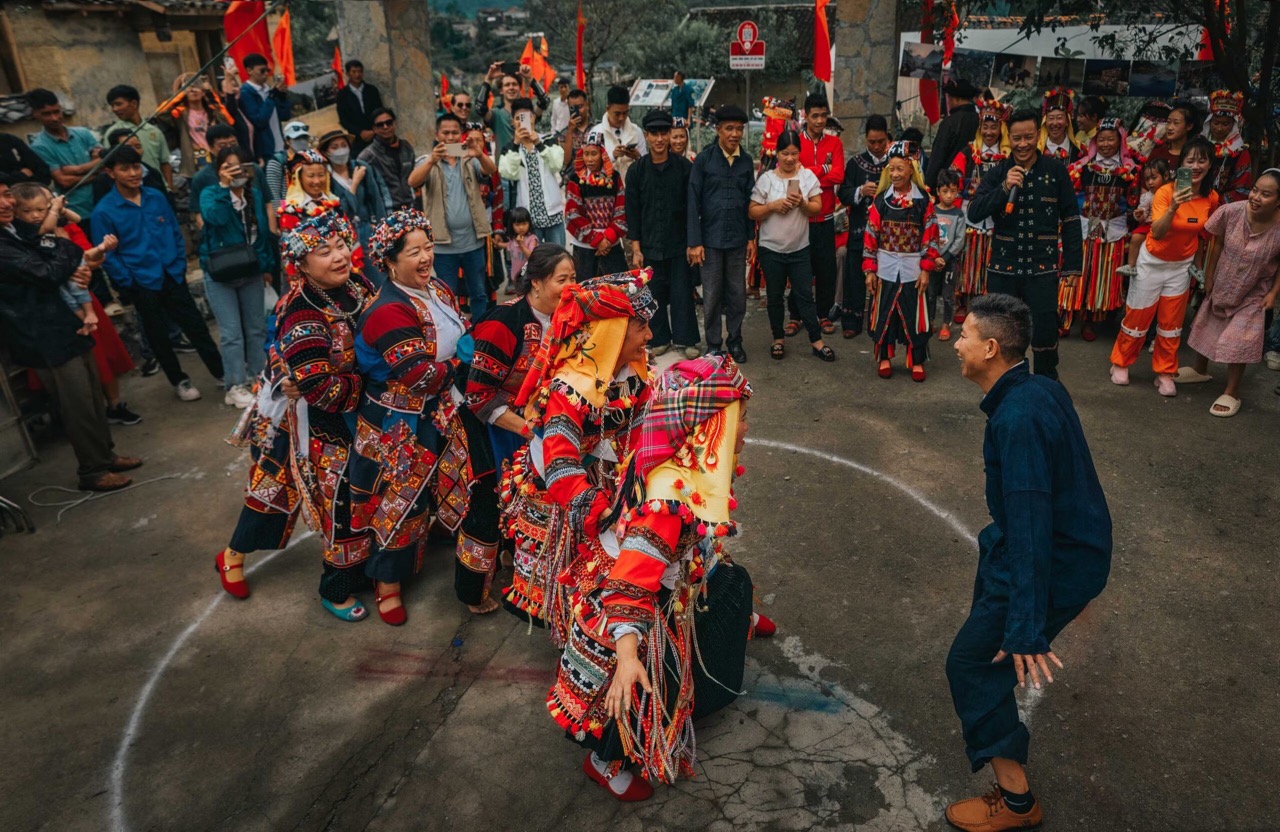The Cao Bang Loop is one of northern Vietnam’s most underrated yet rewarding journeys. This remote province near the Chinese border invites travelers to explore winding mountain roads, ethnic minority villages, and breathtaking landscapes carved by time. Often overlooked in favor of Sapa or Ha Giang, Cao Bang Loop offers a quieter, more authentic alternative with its own collection of jaw-dropping views and immersive experiences. For anyone looking to escape the mainstream and dive deep into Vietnam’s highland culture, here are the ultimate Cao Bang Loop travel guidelines.
1. Overview of Cao Bang
 Cao Bang Province
Cao Bang Province is located in Vietnam’s northeast, bordering China, and is known for its dramatic karst landscapes, winding rivers, and lush forests. The province enjoys a temperate climate, with four distinct seasons, though the most pleasant times to visit are spring (March to May) and autumn (September to November) when temperatures are cool and skies are clear. As a land of diversity, Cao Bang is home to more than nine ethnic minority groups, including the Tay, Nung, Hmong, and Dao, each preserving unique customs, crafts, and languages. Nature and culture go hand in hand here, with travelers able to visit both ancient cave systems and centuries-old stilt houses in the same day.
2. Top Attractions of the Cao Bang Loop
2.1. Ma Phuc Pass
Ma Phuc Pass is one of the most iconic and scenic mountain passes in Cao Bang, winding through limestone karsts and offering panoramic views of green valleys below. Located on National Highway 3, the pass is often the first major highlight for travelers beginning the loop. The road here snakes dramatically between towering cliffs, making it a favorite stop for photography and short breaks. In local culture, the name “Ma Phuc”, which translates to “Kneeling Horse”, comes from a legend of horses kneeling in respect to the sheer beauty of the area.
2.2. Khau Coc Cha Pass

Khau Coc Cha Pass is often less crowded but no less stunning than its more famous counterparts. This winding road connects
Meo Vac in Ha Giang to Cao Bang and serves as one of the lesser-known but most thrilling parts of the loop. The views here are untamed and raw, often cloaked in mist and silence, giving it a mystical, untouched feel. The pass requires careful navigation, but those who brave the turns are rewarded with a spectacular highland panorama.
2.3. Ban Gioc Waterfall
 Ban Gioc Waterfall
Ban Gioc Waterfall is perhaps the most famous natural attraction in Cao Bang, known for being one of the largest and most beautiful waterfalls in Southeast Asia. It lies directly on the border with China and spans over 300 meters wide with water cascading down multiple tiers. The site is easily accessible and often combined with a bamboo boat ride that takes you close to the falls. Ban Gioc is not just visually stunning; it also represents the harmony and shared beauty between Vietnam and its northern neighbor.
2.4. Phat Tich Truc Lam Pagoda
Perched on a hillside overlooking Ban Gioc Waterfall, the Phat Tich Truc Lam Pagoda offers both spiritual serenity and breathtaking views. Built in traditional Vietnamese architectural style, the pagoda is a peaceful retreat for reflection and meditation. Visitors climb a series of steps to reach the top, where they are greeted by panoramic views of the falls and surrounding countryside. It’s a cultural site that blends religious devotion with natural appreciation.
2.5. Nguom Ngao Cave
Nguom Ngao Cave is a natural wonder carved into the limestone mountains near Ban Gioc Waterfall. Stretching over 2 kilometers, the cave system features an impressive array of stalactites and stalagmites, illuminated in various colors. Walking through its chambers feels like entering a different world, cool and echoing with underground secrets. The cave is also deeply embedded in local legends and serves as an important natural monument.
2.6. Angel-Eyed Mountain

Also known as Mat Than Mountain, Angel-Eyed Mountain gets its name from the perfectly round hole at its center, resembling an eye staring into the sky. This striking limestone formation sits amidst lush rice fields, creating a surreal and photogenic contrast of rock and greenery. It’s a quick stop along the loop, but one that leaves a lasting visual impression. Locals often associate the mountain with good fortune and harmony with nature.
2.7. Thang Hen Lake
Thang Hen Lake is a tranquil body of water nestled among forested hills, changing color with the seasons from emerald green to sapphire blue. Located about 30 kilometers from Cao Bang City, the lake is surrounded by small villages and limestone peaks, making it a serene spot for picnics or boat rides. The area is especially beautiful in the early morning, when mist hovers over the water and the reflections create a dreamlike scene. It’s a peaceful detour that contrasts beautifully with the ruggedness of the mountain passes.
2.8. Pac Bo Historical Site
Pac Bo is not only a beautiful natural area but also one of Vietnam’s most significant revolutionary sites. It was here that President Ho Chi Minh returned to Vietnam in 1941 after years of exile and began organizing the resistance against colonial forces. Visitors can explore the small cave where he lived, the Lenin Stream, and the nearby memorials that honor the early revolutionary movement. The site combines patriotic history with tranquil nature, offering both education and reflection.
2.9. Khuoi Ky Stone Village
Khuoi Ky is a traditional Tay village famous for its unique stone houses, built entirely of locally sourced rock. The village sits peacefully beside a stream and surrounded by karst mountains, preserving an atmosphere of timeless simplicity. Locals continue to live in harmony with nature, farming and maintaining age-old crafts. Staying overnight in a homestay here gives visitors a rare chance to experience Tay culture firsthand.
3. Travel Tips to the Cao Bang Loop

3.1. Choosing Homestays on Cao Bang Loop
Homestays are a highlight of the Cao Bang Loop experience, offering not only a place to sleep but also a window into the lives of local families. From stilt houses in Khuoi Ky to Nung family homes near Quang Uyen, the options vary, but all share a sense of warmth and authenticity. If you want to try authentic
Cao Bang food, meals are typically home-cooked using ingredients grown nearby, adding to the cultural immersion. It’s best to book through responsible tour operators like YESD Travel to ensure comfort and ethical practices.
3.2. Transportation to the Cao Bang Loop
Cao Bang Loop is about 280 kilometers from Hanoi, with sleeper buses and private vans being the most common transport options. The ride can take 6 to 8 hours, depending on road and weather conditions, and typically drops you off at Cao Bang City. From there, you can rent a motorbike or book a private driver to begin the loop. Travelers unfamiliar with Vietnamese roads may prefer going with a guide, especially for safety and navigation.
3.3. Preparation for the Cao Bang Loop
Preparing for the loop involves more than just packing – expect unpredictable weather, limited phone signal, and remote conditions. Bring sturdy hiking shoes, light layers, rain gear, and a first-aid kit. Don’t forget essentials like cash, a refillable water bottle, and snacks, since ATMs and stores are scarce outside of the city. A basic grasp of Vietnamese or a translation app can also help ease communication in remote villages.
3.4. Ideal Itinerary for the Cao Bang Loop
A typical itinerary in Cao Bang Loop spans four days, starting from Cao Bang City and looping through Tra Linh, Trung Khanh, Ban Gioc, and Quang Uyen. Day one usually includes Ma Phuc Pass and Khuoi Ky; day two covers Ban Gioc and Nguom Ngao Cave. Day three explores Thang Hen Lake and Pac Bo, and the final day is reserved for the return. The loop is flexible, with additional detours depending on your pace and interests. if you want to customize your experience to the fullest, it is best to consult locals like
YESD Travel for more insights.
3.5. Cautions for the Cao Bang Loop
Cao Bang Loop’s terrain is beautiful but can be treacherous during rainy seasons when landslides and slippery roads are common. Always check weather forecasts and road conditions before departure. Respect local customs by dressing modestly, asking permission before taking photos, and supporting local businesses. Lastly, travel insurance and emergency contact info are a must for any trip through Vietnam’s remote highlands.
Conclusion
The Cao Bang Loop is more than just a scenic drive – it’s a journey into the soul of northern Vietnam. From emerald lakes and thunderous waterfalls to stone villages and historic caves, every turn offers a new discovery. It’s a place where time seems to slow down, letting you truly connect with nature, people, and history. For a responsible, insightful, and unforgettable adventure, the Cao Bang Loop deserves a top spot on your Vietnam travel list.
YESD Travel is a social enterprise that specializes in responsible tourism in Vietnam. We offer authentic, culturally immersive, and sustainable tours that also give back to the northern community, especially the Ha Giang Loop. Our tours are private, personal, and open for customization to your liking with local guides trained through our educational initiatives. If you’re a seasoned traveler or a first-time visitor, be sure to book a tour with us to immerse yourself in the tale of colors, cuisine, and culture of the Cao Bang Loop.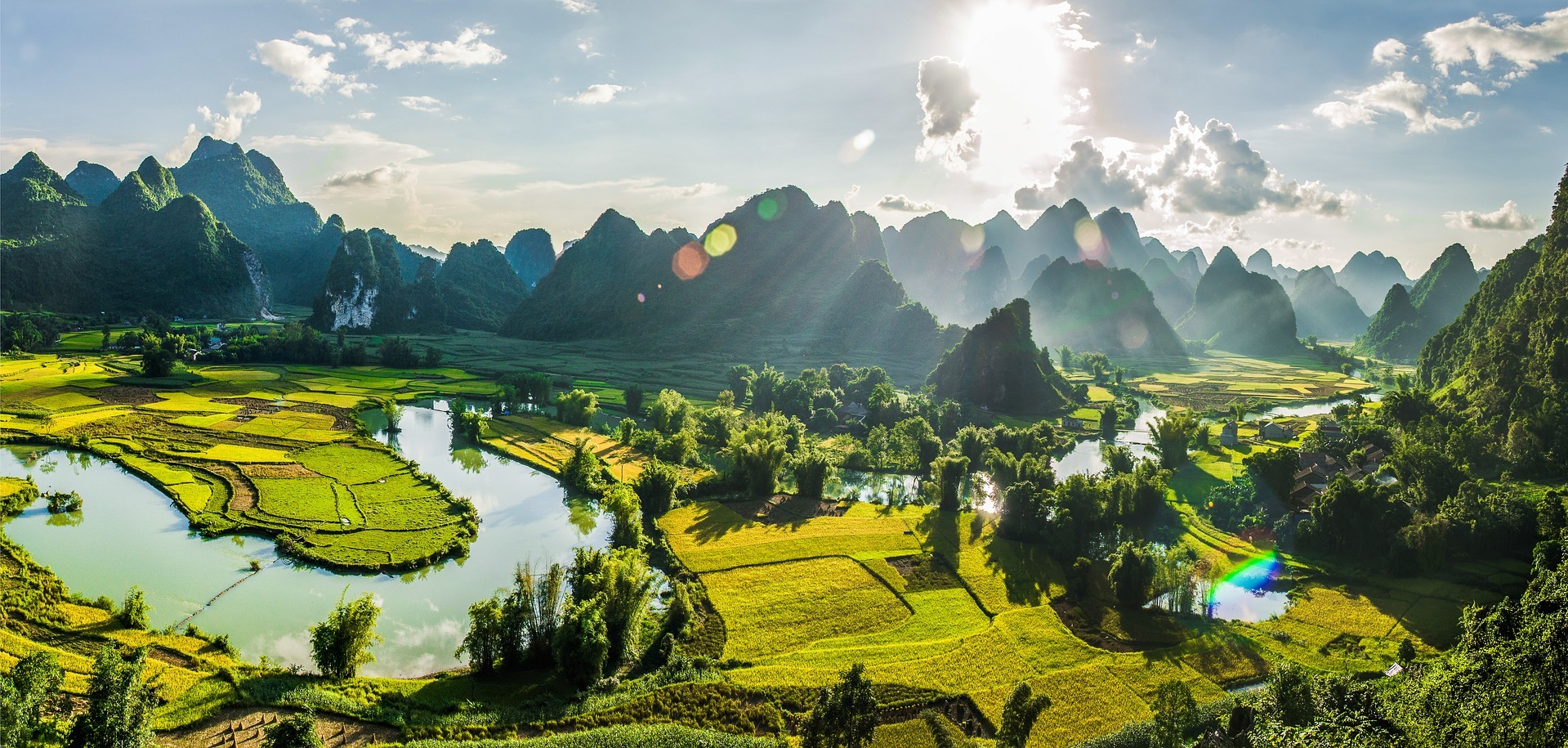 Cao Bang Province is located in Vietnam’s northeast, bordering China, and is known for its dramatic karst landscapes, winding rivers, and lush forests. The province enjoys a temperate climate, with four distinct seasons, though the most pleasant times to visit are spring (March to May) and autumn (September to November) when temperatures are cool and skies are clear. As a land of diversity, Cao Bang is home to more than nine ethnic minority groups, including the Tay, Nung, Hmong, and Dao, each preserving unique customs, crafts, and languages. Nature and culture go hand in hand here, with travelers able to visit both ancient cave systems and centuries-old stilt houses in the same day.
Cao Bang Province is located in Vietnam’s northeast, bordering China, and is known for its dramatic karst landscapes, winding rivers, and lush forests. The province enjoys a temperate climate, with four distinct seasons, though the most pleasant times to visit are spring (March to May) and autumn (September to November) when temperatures are cool and skies are clear. As a land of diversity, Cao Bang is home to more than nine ethnic minority groups, including the Tay, Nung, Hmong, and Dao, each preserving unique customs, crafts, and languages. Nature and culture go hand in hand here, with travelers able to visit both ancient cave systems and centuries-old stilt houses in the same day.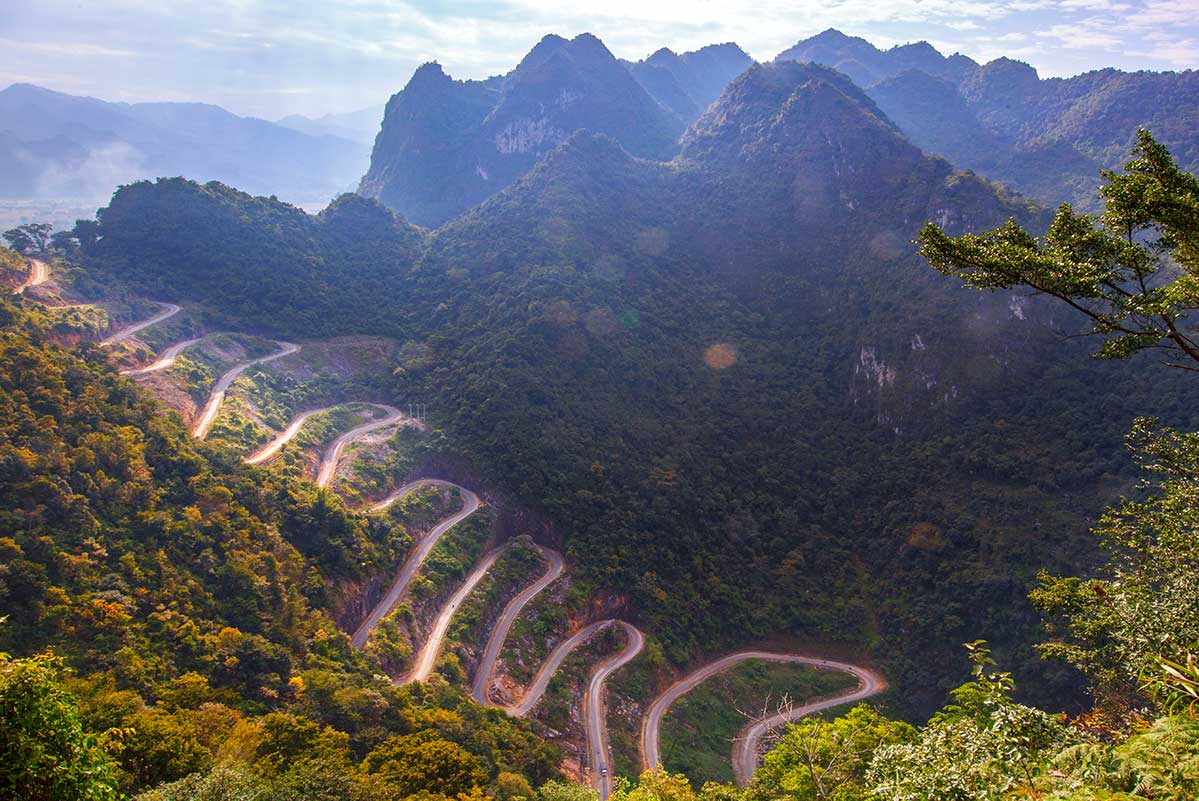 Khau Coc Cha Pass is often less crowded but no less stunning than its more famous counterparts. This winding road connects Meo Vac in Ha Giang to Cao Bang and serves as one of the lesser-known but most thrilling parts of the loop. The views here are untamed and raw, often cloaked in mist and silence, giving it a mystical, untouched feel. The pass requires careful navigation, but those who brave the turns are rewarded with a spectacular highland panorama.
Khau Coc Cha Pass is often less crowded but no less stunning than its more famous counterparts. This winding road connects Meo Vac in Ha Giang to Cao Bang and serves as one of the lesser-known but most thrilling parts of the loop. The views here are untamed and raw, often cloaked in mist and silence, giving it a mystical, untouched feel. The pass requires careful navigation, but those who brave the turns are rewarded with a spectacular highland panorama.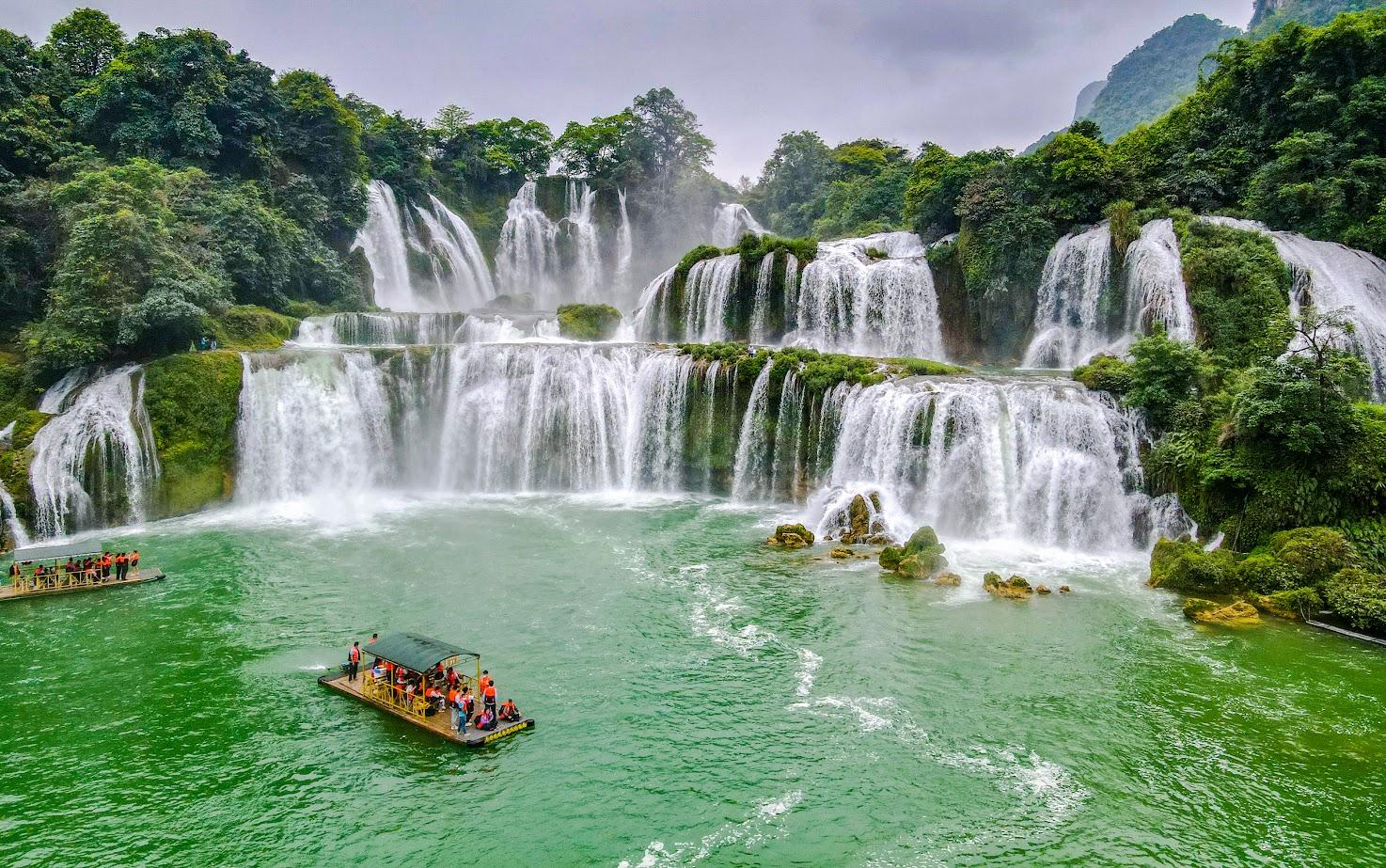 Ban Gioc Waterfall is perhaps the most famous natural attraction in Cao Bang, known for being one of the largest and most beautiful waterfalls in Southeast Asia. It lies directly on the border with China and spans over 300 meters wide with water cascading down multiple tiers. The site is easily accessible and often combined with a bamboo boat ride that takes you close to the falls. Ban Gioc is not just visually stunning; it also represents the harmony and shared beauty between Vietnam and its northern neighbor.
Ban Gioc Waterfall is perhaps the most famous natural attraction in Cao Bang, known for being one of the largest and most beautiful waterfalls in Southeast Asia. It lies directly on the border with China and spans over 300 meters wide with water cascading down multiple tiers. The site is easily accessible and often combined with a bamboo boat ride that takes you close to the falls. Ban Gioc is not just visually stunning; it also represents the harmony and shared beauty between Vietnam and its northern neighbor.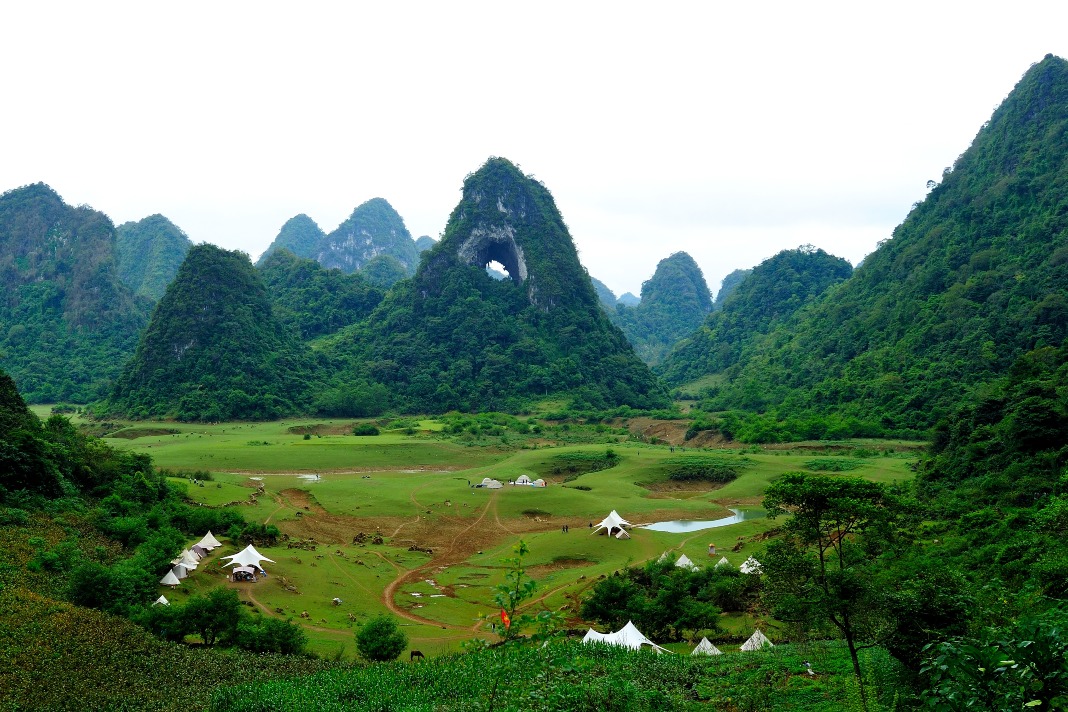 Also known as Mat Than Mountain, Angel-Eyed Mountain gets its name from the perfectly round hole at its center, resembling an eye staring into the sky. This striking limestone formation sits amidst lush rice fields, creating a surreal and photogenic contrast of rock and greenery. It’s a quick stop along the loop, but one that leaves a lasting visual impression. Locals often associate the mountain with good fortune and harmony with nature.
Also known as Mat Than Mountain, Angel-Eyed Mountain gets its name from the perfectly round hole at its center, resembling an eye staring into the sky. This striking limestone formation sits amidst lush rice fields, creating a surreal and photogenic contrast of rock and greenery. It’s a quick stop along the loop, but one that leaves a lasting visual impression. Locals often associate the mountain with good fortune and harmony with nature.